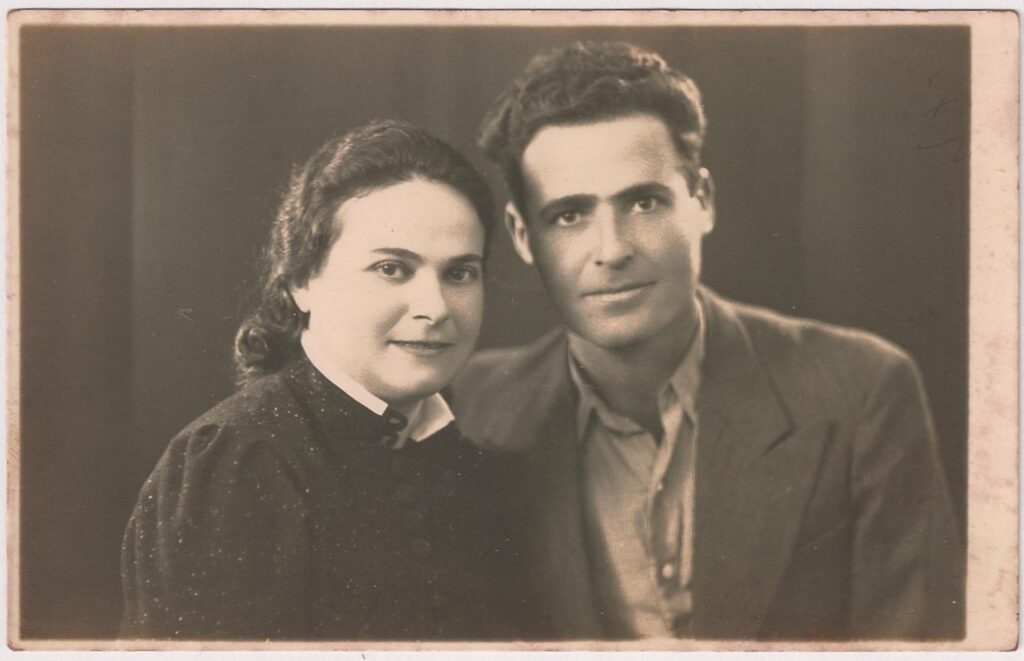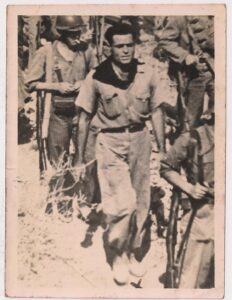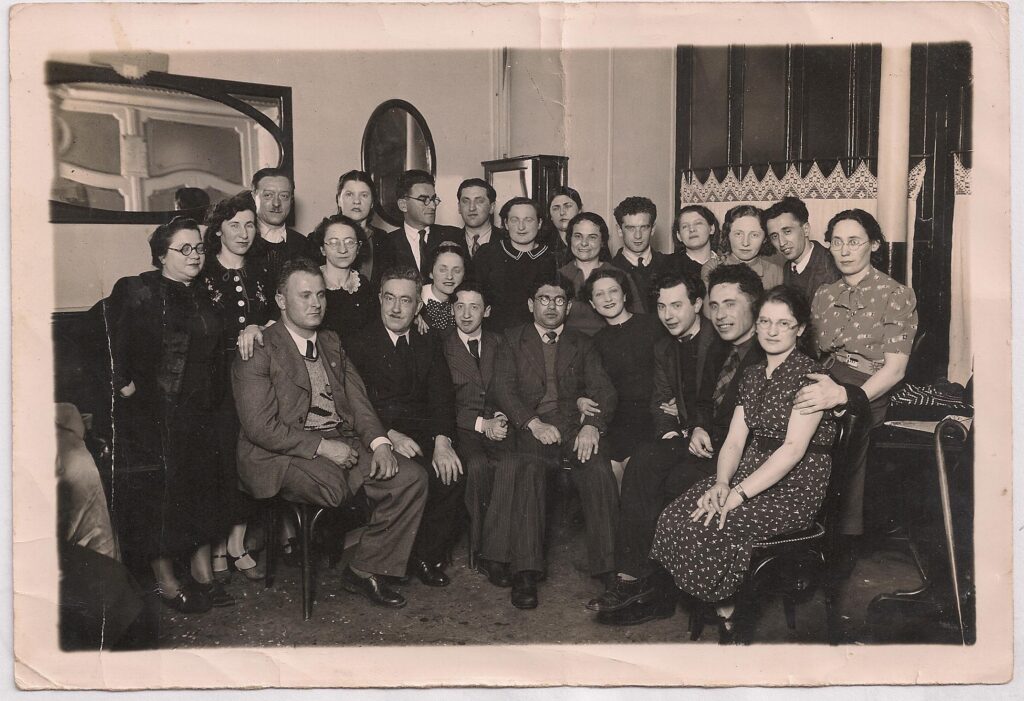Women of Jewish Palestine and Spain: The Case of the Meites Sisters
The lives of Ruth and Haya Meites, two sisters who left Jewish Palestine in order to help Republican Spain in its struggle against fascism, illustrate the level of international women’s participation in the Spanish Civil War—and its limits.
Around 700 women from around the world volunteered in Spain during the civil war. They constituted a tiny fraction of the 35,000 or more international volunteers who flocked to Spain from over 50 different countries to support the Republican forces. Some of these women came with or after their husbands and partners. Notable examples are the Jewish-Argentine Mika Feldman de Etchebéhère, the British Nan Green, the American Marion Merriman, Jewish-German photographer Gerda Taro, and Italian photographer Tina Modotti. This was also the intention of the Jewish-Palestinian Yael Gerson who followed her boyfriend, Moshe Halevi; of Simona, the partner of Misha Bronstein (Michael Baron); of Sara, wife of Yosef Weisblum; of Bilha, Aron Tenenbaum’s wife, or of Hana Frank. All five left Palestine with the intention to go to Spain, but in the end stayed in France and contented themselves with political activity. Many other women, however, did make it to Spain. They were young, educated, idealistic and adventurous, and came with prior political experience.
Not a few of the women who wanted to enlist were rejected for their presumed inability to contribute to the anti-fascist struggle. Mothers were not drafted to the IB, nor were women without relevant training. This policy is illustrated in the stories of the above-mentioned Bronstein, Weisblum, Tenenbaum, and Frank. Whereas men could be drafted to the Brigades without any previous military experience, many of the women of the IB had been trained nurses and doctors, and their professional skills justified their enlistment.
While the historiography of the International Brigades is remarkably rich, the history of women volunteers has not been sufficiently researched. Even less scholarly attention has been paid to the enlistment of Jewish women from different countries, despite their relative prominence, both in the home front and in the frontlines.
With some exceptions, most women served as nurses and translators. It seems that approximately 600 nurses, many of whom were Jewish, volunteered in Spain. Women who sought to take up arms faced greater adversity in the IB. Such was the case of Cypora Gilert and Rosa Blanca, Jewish volunteers from Palestine, who had been restricted to auxiliary roles in the rear-guard, since “our ruthless enemy does not recognize women’s equal rights,” according to Israel Centner. Centner, also a Jewish volunteer from Palestine, was commissioned in 1937 by the Palestine Communist Party (PCP) to write the epic story of the Palestine volunteers in the IB. Like many other volunteers, Cypora Gilert was a member of the PCP, and had been repeatedly arrested by the British authorities.
Jewish Prominence in the IB
The ranks of the IB included a great number of Jewish volunteers. In most cases, the percentage of Jews among the volunteers from each country was significantly larger than their share in the general population of these countries. Jews amounted to 45% of volunteers from Poland, 38% of the American volunteers, and 15% of the French. The same applies to most other countries from which Jews left for Spain. Their share was particularly large among the women, although we do not have enough data on this group.
More than 160 volunteers left Palestine for Spain, most of them members of the PCP. This figure is quite considerable, especially since the entire Jewish population of Palestine did not exceed 400,000 at the time and given the Zionist parties’ efforts to discourage their members from volunteering. Most of these volunteers were anti-Zionists and were often alienated by the “conquest of labor,” the Zionist policy of hiring Jewish rather than non-Jewish workers. Fighting for social justice implied fighting against the nationalist aspects of Zionism as well. Previous research uncovered the names of 145 volunteers from Palestine who joined the Republican struggle in Spain: 125 Jews and 20 non-Jews; 131 men and 14 women. However, it appears that the numbers might be higher.
The Meites: From Vilnius to Haifa
Moshe Yakov and Chana Meites had immigrated with their children from Lithuania to Palestine in 1910 and settled in Haifa. Tova, Haya and Zeev were born in Vilnius. Ruth, was born on October 23, 1910 and it is not entirely clear whether she was also born in Eastern Europe, as some documents state, and therefore came as an infant to Palestine; or whether she was born in Haifa, as she declared in one of the documents of the IB.
A couple of years after their relocation to Palestine, the family home was accidentally burnt down. Chana perished in the fire; Moshe Yakov was badly wounded. The children (except Tova, who was older) were put in an orphanage in Jerusalem. They stayed there as long as their father was in hospital (1912-1919). After he came out of hospital, Moshe Yakov remarried and the children grew up in kibbutzim from 1920 onward. Haya and Ruth were together in Ein Harod, in a Socialist Zionist environment.
Haya’s Political Engagement
Pierre Laroche described his mother’s biography as “long and complicated involved in the political unrest of her times going from Vilnius, Lithuania to Palestine, [being in] prison in Palestine, [travelling] to Russia, [to] France, and the war…” Haya became a political activist in 1925 and joined the PCP. She worked in a clandestine printing press. “We have found a notebook where Haya wrote that they had secret printing works in Bethlehem in 1928,” says her daughter in law, Jean Laroche. Haya’s ideological commitment impressed the party’ leadership and she was sent to Moscow for additional doctrinal training. Because of her political activity, Haya was arrested by the British authorities in 1933.
The Spanish Civil War resonated considerably in Jewish Palestine. The Hebrew press devoted much space to the course of events in the Iberian Peninsula all through the Spring of 1939. The war generated a wide range of reactions.
Some, especially right-wing Revisionists, sympathized with the nationalist rebels seeking to rid Spain of the “communist menace.” The majority, however, expressed support for the Spanish Republic, raising funds and collecting food and medicines to help the Republic. The Histadrut (Confederation of Jewish Workers) played a key role in this solidarity campaign. Still, Zionist parties of all ideological shades opposed the idea of going to fight in Spain. With the outbreak of violent clashes between the emerging Palestinian national movement and the Yishuv in 1936, young men were needed to defend Jewish settlements from Arab attacks and fighting in the Iberian Peninsula would have risked that.
The PCP, outlawed in 1921, was galvanized into action and through several front organizations mobilized considerable support. The most notable one was Antifa, The Society to Aid Victims of Fascism and Antisemitism in Palestine. The PCP had only a few hundred affiliates, many of them were detained by British authorities, sentenced by courts to serve time in prisons, and those born outside Palestine were often deported from the country.
Several of Haya’s comrades considered going to Spain to fight Fascism. Notable among them was Meir Levi, forced by the British to leave the country in 1937. He arrived in Paris where he was helped by his sister Miryam and her husband Max Amram. France had the largest Communist party outside of the Soviet Union and Paris became the organizational centre of the IB. Haya did not leave Palestine together with Meir. She left a little later, on October 27, 1937, planning on joining Meir in Spain. The information she gave to obtain her visa was that she was a professional nurse. Still, she was not able to convince the Comintern officials that she could join the medical services of the Republic, so she stayed in Paris.
During the civil war, Meir Levi was a political commissar (politruk) of a Hungarian unit. He was captured on June 5, 1938 by the nationalist army and sent to a prison in the monastery of San Pedro de Cardeña, where he died of typhus on April 24, 1939. Haya’s commitment to the republican cause was firm, long after its defeat. It is unclear whether Haya considered returning to Palestine at the end of the Spanish Civil War. In early May 1939, however, the British authorities decided to ban the return of five communists, including Haya, who had left for Spain.
Ruth’s Iberian Experiences
Ruth left Palestine in June 1937 on her own. In Paris, she contacted Max and Miryam Amram in order to facilitate her joining the IB and crossing into Spain. She entered Spain in November and went straight to Albacete, the Republican training base. Fortunately, she shared her story with David Diamant (Erlich), a Polish-French Jew who wrote the pioneering book on Jewish volunteers in the Spanish Civil War.
In her testimony to Diamant, Ruth emphasized her training in Palestine as a nurse. She made no mention of any political activity in which she was involved, prior to leaving Palestine. I was on the “periphery,” she said with no further explanation. Once in Paris, “Max took me to Mathurin Moreau Avenue, where I got in touch with the relevant Comintern authorities. I went through two commissions, one political and one medical. I was asked various questions: do I feel morally strong enough, will I not be afraid of the bombings, etc. I was accepted as fit, but I still had to wait for months.”
Ruth’s journey to Spain started at the Gare de Lyon. During the trip, she met other nurses. The group also included a German volunteer, a Bulgarian, a couple of nurses, and various others. A party official from the Mathurin Moreau Avenue Committee accompanied them to Perpignan. They stayed for two days in a hotel, and then moved to a small village. Before sunrise, they were taken to the border, given socks and trainers to start their march through the mountains. The climb took eight hours.
After a brief stay in Albacete, Ruth started her first job in a hospital in a village in Aragon. “You had to be strong, physically and morally, to survive the continuous bombing. Every time the fascist planes came, we had to evacuate all our wounded from the second and third floors, and all this in the greatest calm.” She became friends with another Jewish volunteer from Palestine, Cypora Nilar/Gilert. There were seven nurses in the hospital, four of whom were Jewish. They faced shortages of medicine and equipment and were told to treat only fighters of the International Brigades.
From time to time, on the Aragon front, they were entitled to a rest. Interestingly enough, although all volunteers were motivated by internationalist ideas, many of them opted for socializing with comrades from the same national or ethnic groups. This was the case with many Jews. As Ruth recalled, at times of rest, they were looking for the company of “Jewish comrades of the Brigades. Among them, I remember Solomon Joffee, a wonderful comrade from Israel, Jankel Lukia, Siomke, a Russian comrade, Micha Bernstein, Meir Levi, political commissar of an infantry company, also from Israel. He was an admirable man; calm and modest; he fell later in the battle. We had a meal together and, for the first time in our lives, we ate rabbit… We were happy to be with healthy fighters. We spent the day very happily and they told us important battle stories. We, the nurses, related our experience. We sang. This meeting was a great feast for us, in the hard daily life of the hospital.”
After three months in Aragon, Ruth was sent to a hospital for soldiers with tuberculosis in Benito. “We had seven wards and about 40 beds. The conditions were extremely difficult. We didn’t even have the most essential medicines. We were terribly inadequate as many of the patients felt doomed due to lack of medication. We took out the dead in the silence of the night in order to avoid the pain of the other patients… The situation was so bad, and we were so busy that we lost the notion of time.” Ruth worked in this hospital until they were evacuated. They first arrived in Valencia with the sick. Then they were sent to Vic.
Contrasting Autobiographies
It is interesting to contrast Ruth’s testimony to David Diamant with the two versions of the Biografía de Militante she had to complete, like other members of the IBs. These Biografías can be found in the Russian State Archive of Socio-Political History (Documents of the Soviet era). She appears in these documents as Rut Meytis, born in Haifa (Palestine) on October 23, 1910. In one version, she completed the Nationality category as “Palestinian” and in the second and more elaborated version, probably aimed at pleasing the political commissars, as “Jewish.” In one, her declared profession was nurse, in the other, both farmer (campesina) and nurse. In the first biographical sketch, she claimed that she had been a member of the Hapoel Zionist sports organization. In the second, she answered with “no” to the question whether she had been a member of any youth, social, or sports organization. To the question whether she was known to be Communist when she lived in Palestine, she answered “no” and reported that she first joined a Communist party in May 1938 while in Spain, as suggested to her by a comrade in the Vic hospital. By now, according to her statement, she was reading texts by Lenin, Marx, and Engels, as well as Communist organs, such as Frente Rojo.
Ruth also made it clear that she had had no contact with Trotskyites. In the information on members of the International Brigades’ Servicio Sanitario, we find the following characterization: “Professionally she does not have a degree, but she does her job well, with interest and is disciplined. Politically uninterested and not active.”
Ruth Meites’ training as a nurse made her a valuable recruit for the International Brigades. Women who joined the International Brigades were often young, educated, idealistic and adventurous, and hoped to create a better world. Haya was 33 years in 1937. Ruth was 27 years old. Despite their youth, many of the female volunteers were experienced political activists, who were subject to persecution and repression in their home countries before leaving for Spain. This is certainly the case of Haya.
As the life stories and trajectories of the Meites sisters demonstrate, the decision to become involved in the Spanish conflict was determined by a complex net of political and interpersonal connections, interactions, and commitments. Some of the volunteers, both male and female, came from broken or single parent families. Pinchas Chefetz, Simona Bronstein, Haya and Ruth Meites, all four grew up in the harsh conditions of the Jerusalem orphanage. At any rate, all women volunteers chose to leave their families and lives in Palestine, in a step that helped them define and consolidate their distinct identities. At the same time, our sources on their lives point to a parallel search for belonging, which they found both in the international struggle against fascism and in their private, interpersonal relationships.
Ranaan Rein is the Elías Sourasky Professor of Latin American and Spanish History and former Vice President of Tel Aviv University. A longer version of this article was published in the Journal of Modern Jewish Studies.















